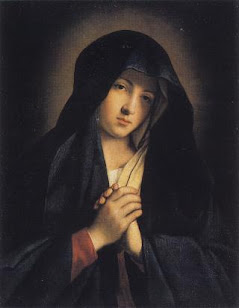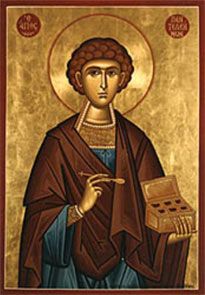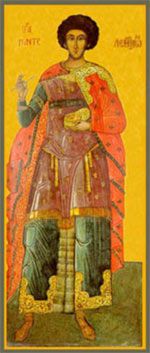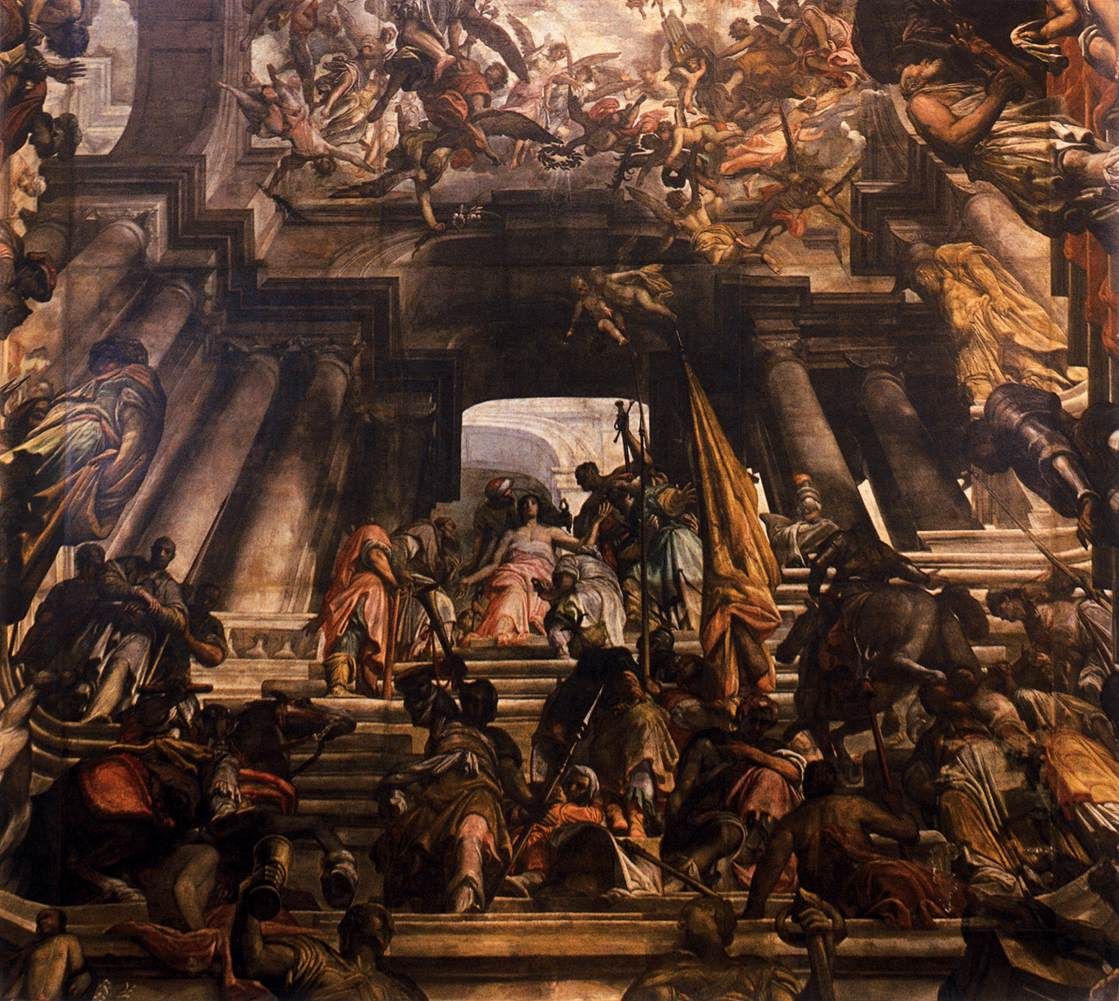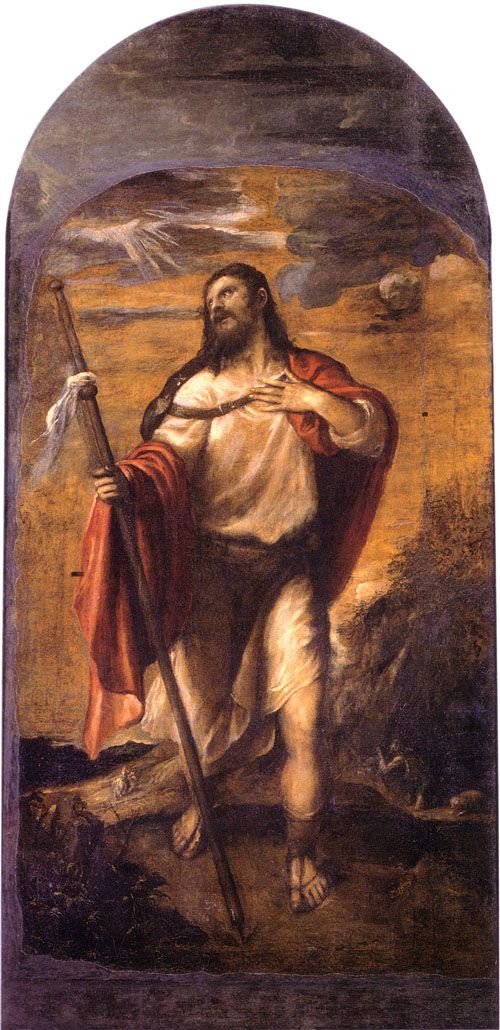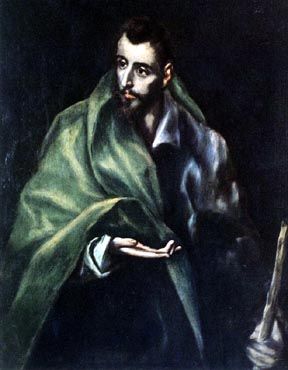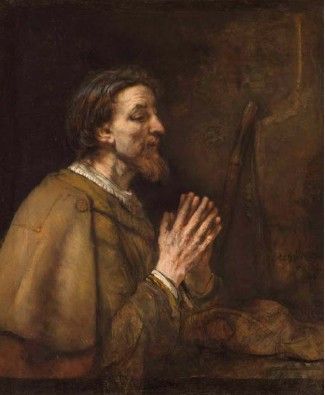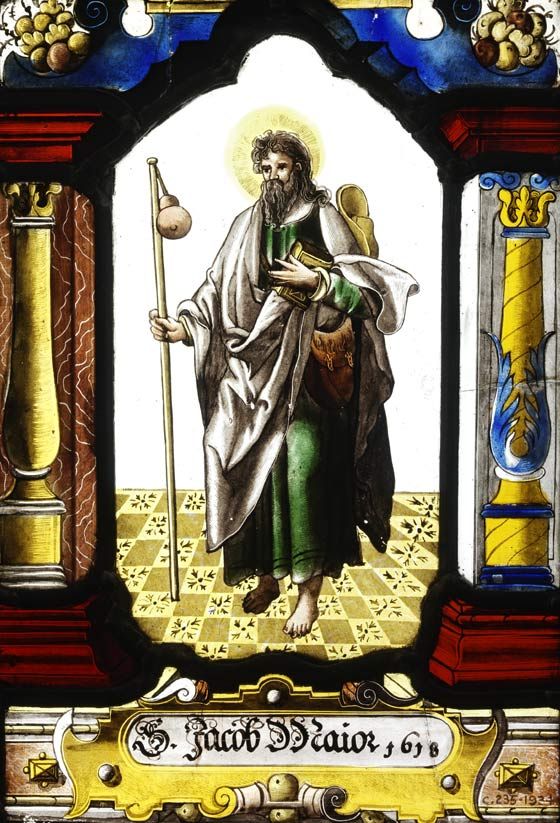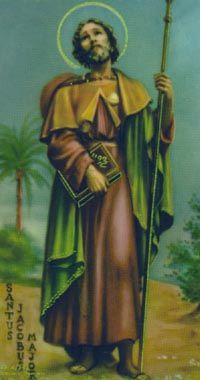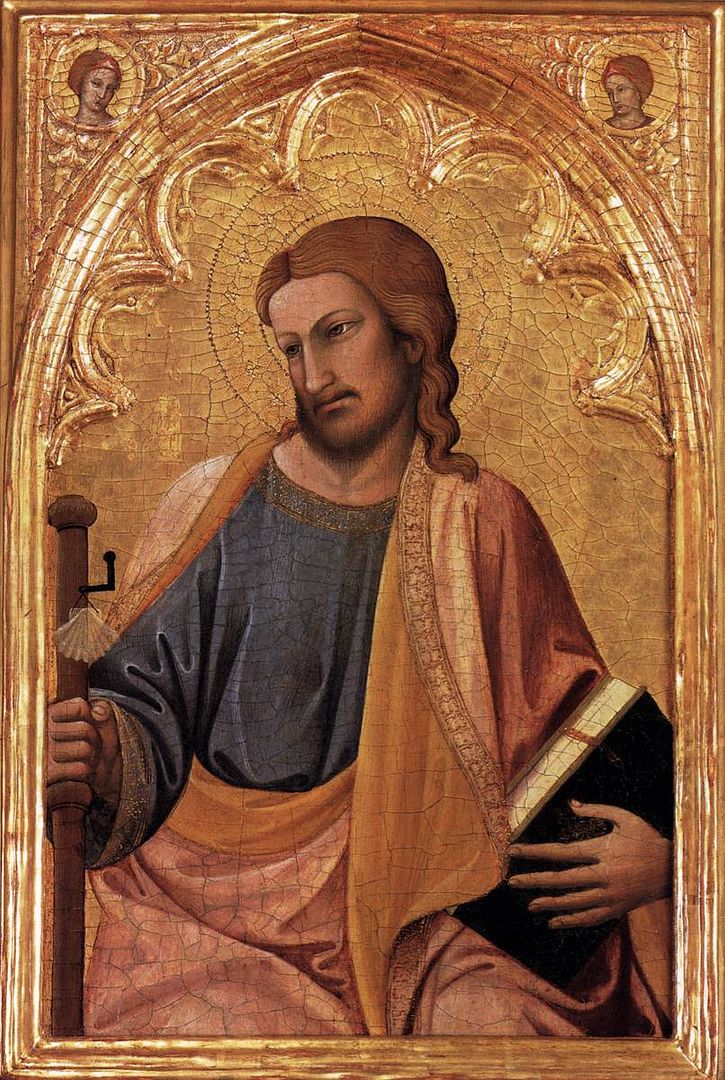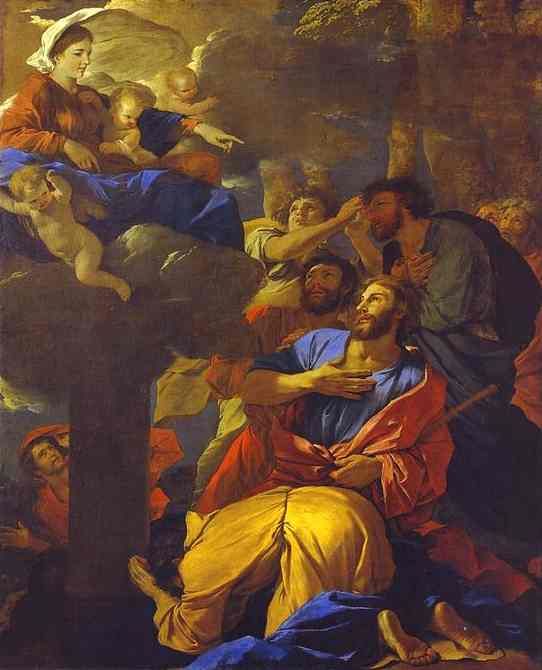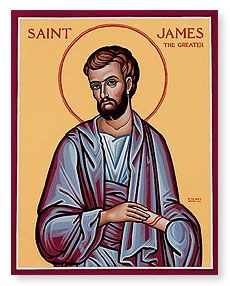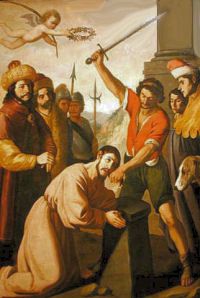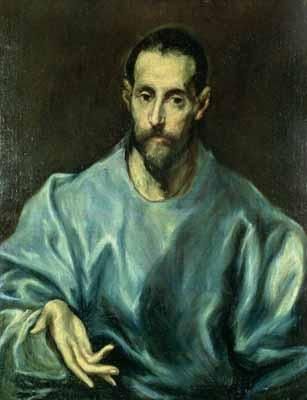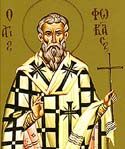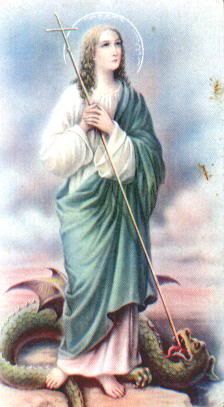Today, July 25, we celebrate the feast day of
Saint James the Greater (died 44), Disciple and friend of Christ, “Son of Thunder,” and first martyr of the Church. Impetuous and quick to temper, James was also a faithful companion to Our Lord, present at significant moments in His life. A gifted preacher, following the death of Jesus, James spent the days until his martyrdom in Spain, establishing the still-popular pilgrimage site of Santiago de Compostela. According to Saint Epiphanus and other historians, he also conserved his virginity in consecration to the Lord. He is honored as the patron of Spain, equestrians, blacksmiths, tanners, veterinarians, and many other locales and professions.
(For “James the Greater,” General Audience delivered by Pope Benedict XVI, June 21, 2006, visit here.)
Saint James was the son of Zebedee, a Galilean fisherman, and Salome, a pious woman who tended after Christ. He and his younger brother, Saint John, were called as disciples just after Simon Peter and Andrew were called.
19When he had gone a little farther, he saw James son of Zebedee and his brother John in a boat, preparing their nets. 20Without delay he called them, and they left their father Zebedee in the boat with the hired men and followed him. (Mark 1: 19-20)
Saint James, along with Peter and John, are often mentioned together in Scripture, as the closest companions of Jesus. They were present at the healing of Peter’s mother in law:
29As soon as they left the synagogue, they went with James and John to the home of Simon and Andrew. 30Simon's mother-in-law was in bed with a fever, and they told Jesus about her. 31So he went to her, took her hand and helped her up. The fever left her and she began to wait on them. (Mark 1:29)
… and the raising of Jairus’ daughter:
51When he arrived at the house of Jairus, he did not let anyone go in with him except Peter, John and James, and the child's father and mother. 52Meanwhile, all the people were wailing and mourning for her. "Stop wailing," Jesus said. "She is not dead but asleep."
53They laughed at him, knowing that she was dead. 54But he took her by the hand and said, "My child, get up!" 55Her spirit returned, and at once she stood up. Then Jesus told them to give her something to eat. 56Her parents were astonished, but he ordered them not to tell anyone what had happened. (Luke 8: 51-56)
Saint James, Peter, and John were present at the
Transfiguration of Our Lord:
2After six days Jesus took Peter, James and John with him and led them up a high mountain, where they were all alone. There he was transfigured before them. 3His clothes became dazzling white, whiter than anyone in the world could bleach them. 4And there appeared before them Elijah and Moses, who were talking with Jesus.
5Peter said to Jesus, "Rabbi, it is good for us to be here. Let us put up three shelters—one for you, one for Moses and one for Elijah." 6(He did not know what to say, they were so frightened.)
7Then a cloud appeared and enveloped them, and a voice came from the cloud: "This is my Son, whom I love. Listen to him!"
8Suddenly, when they looked around, they no longer saw anyone with them except Jesus. (Mark 9:2-8)
… and the Lord’s
Agony in the Garden of Gethsemane:
36Then Jesus went with his disciples to a place called Gethsemane, and he said to them, "Sit here while I go over there and pray." 37He took Peter and the two sons of Zebedee along with him, and he began to be sorrowful and troubled. 38Then he said to them, "My soul is overwhelmed with sorrow to the point of death. Stay here and keep watch with me."
39Going a little farther, he fell with his face to the ground and prayed, "My Father, if it is possible, may this cup be taken from me. Yet not as I will, but as you will."
40Then he returned to his disciples and found them sleeping. "Could you men not keep watch with me for one hour?" he asked Peter. 41"Watch and pray so that you will not fall into temptation. The spirit is willing, but the body is weak."
42He went away a second time and prayed, "My Father, if it is not possible for this cup to be taken away unless I drink it, may your will be done."
43When he came back, he again found them sleeping, because their eyes were heavy. 44So he left them and went away once more and prayed the third time, saying the same thing.
45Then he returned to the disciples and said to them, "Are you still sleeping and resting? Look, the hour is near, and the Son of Man is betrayed into the hands of sinners. 46Rise, let us go! Here comes my betrayer!" (Matthew 26: 36-46)
Earning their nickname “
Sons of Thunder,” James and his brother John are recorded as wishing to reign down fire from heaven on a Samaritan village which refused them hospitality:
51As the time approached for him to be taken up to heaven, Jesus resolutely set out for Jerusalem. 52And he sent messengers on ahead, who went into a Samaritan village to get things ready for him; 53but the people there did not welcome him, because he was heading for Jerusalem. 54When the disciples James and John saw this, they asked, "Lord, do you want us to call fire down from heaven to destroy them?" 55But Jesus turned and rebuked them, 56and they went to another village. (Luke 9: 51-56)
Perhaps James is remembered most for the conversation his mother, Salome, had with Jesus, requesting that her two sons be placed at His right and left-- not realizing the crucifixion and death that lie in store for Christ, but rather imagining an earthly kingdom and throne:
20Then the mother of Zebedee's sons came to Jesus with her sons and, kneeling down, asked a favor of him.
21"What is it you want?" he asked.
She said, "Grant that one of these two sons of mine may sit at your right and the other at your left in your kingdom."
22"You don't know what you are asking," Jesus said to them. "Can you drink the cup I am going to drink?"
"We can," they answered.
23Jesus said to them, "You will indeed drink from my cup, but to sit at my right or left is not for me to grant. These places belong to those for whom they have been prepared by my Father."
24When the ten heard about this, they were indignant with the two brothers. 25Jesus called them together and said, "You know that the rulers of the Gentiles lord it over them, and their high officials exercise authority over them. 26Not so with you. Instead, whoever wants to become great among you must be your servant, 27and whoever wants to be first must be your slave— 28just as the Son of Man did not come to be served, but to serve, and to give his life as a ransom for many." (Matthew 20: 20-28)
Following the death of Christ, James was present in the
Upper Room, and on more than one recorded appearance of the Resurrected Jesus. From the time of Jesus’
Ascension into Heaven, there is little recorded history of James’ missionary activity until that of his martyrdom. Biblical scholars suggest that he probably traveled between Judea and Samaria, and tradition speaks of his journey to Spain, where later his mortal remains were received.
Saint James was the first of the apostles to suffer martyrdom, in Jerusalem, in approximately 44. After nine years preaching in Spain, he had returned to Jerusalem, and was brought before King Herod Agrippa. The Apostle had been preaching fearlessly there, curing the sick and the blind, and delivering possessed persons. Herod promptly sentenced James to execution, reported sparsely by Luke in the Acts of the Apostles:
“About that time Herod the king laid violent hands upon some who belonged to the Church, and he killed James, the brother of John with the sword” (Acts 12, 1-2). As Clement of Alexandria, James died by beheading after having converting his accuser:
“He who had brought him to the tribunal was so moved seeing him give testimony that he also confessed to being a Christian himself.”
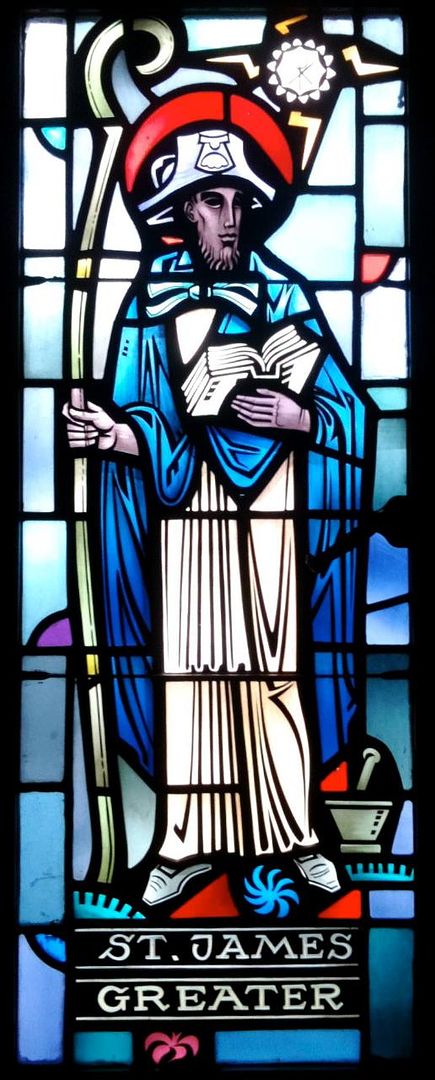
Tradition holds that following his martyrdom in Jerusalem, his followers are believed to have carried his body down the coast and placed it in a stone boat—which was carried by angels to the northern coast of Spain. There, his remains were buried, and promptly forgotten about until the ninth century, when a hermit was led by heavenly vision to the spot. The tomb was rediscovered, and the relics authenticated. From that time, the spot-- Santiago (Iago translating as James) de Compostela—became a center of miracle and pilgrimage-- so much so that Compostela became the third greatest place of pilgrimage, just after Jerusalem and Rome. Today, pilgrims continue to flock to Compostelo, taking one of the many routes known as the “Camino." Pilgrims attach cockleshells—the symbol of Saint James-- or their facsimile to their hats or clothes as "pilgrim badges," signs that they'd venerated the holy relics of the great saint.
(For a recipe for Coquilles St. Jacques à la Provençale, traditionally eaten on the feast of Saint James, see here.)

Saint James is also recognized as having appeared in corporeal form, during the Spanish defense of their land and Christianity from the invading Moors. The saint is said to have appeared on a white horse at the Battle of Clavijo, adorned in cockle shells, in 844, while the Christians were in retreat before the onslaught of the Arab and Berber invaders. Thanks to James’ miraculous appearance, the Moors were defeated. The rallying cry of the Spanish troops, from that time, became “Santiago!”
Saint James the Greater is recognized for his special place within the Disciples of Christ-- having been selected by Our Lord because of his burning, impetuous, and outspoken faith. Through his interaction with Jesus, these qualities were purified, and the former “Son of Thunder” could then proclaim the Gospel of peace. We could all benefit from the same purification, the conversion of our anger, temper, and frustration to righteous instruments of peace and Christian virtue. We look to Saint James today, for inspiration and intercession, that we might better embody the peaceful message of Jesus Christ.
Almighty Father,
by the martyrdom of Saint James you blessed the work of the early Church.
May his profession of faith give us courage and his prayers bring us strength.
Grant, O merciful God, that as thine holy Apostle Saint James, leaving his father and all that he had, without delay was obedient unto the calling of thy Son Jesus Christ, and followed him; so we, forsaking all worldly and carnal affections, may be evermore ready to follow thy holy commandments; through Jesus Christ our Lord. Amen.
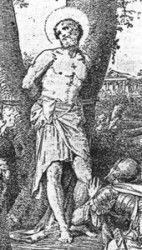 Pantaleon was born. in the city of Nicodemia (currently called Izmit, in northern Turkey near the Black Sea). His mother, Eubula, was a devout Christian who raised her son in the Christian way of life, while his father, Eustorgius, did not convert until much later. Sadly, Eubula passed away while Pantaleon was still quite young. While he had been exposed to Christianity, Pantaleon did not fully practice as a young man. Handsome, polite, and humble, he radiated happiness and peace to all he encountered, but was drawn to worldly pursuits. His father sent him to study under a famous physician, and eventually was appointed the royal physician to the court of Emperor Maximian.
Pantaleon was born. in the city of Nicodemia (currently called Izmit, in northern Turkey near the Black Sea). His mother, Eubula, was a devout Christian who raised her son in the Christian way of life, while his father, Eustorgius, did not convert until much later. Sadly, Eubula passed away while Pantaleon was still quite young. While he had been exposed to Christianity, Pantaleon did not fully practice as a young man. Handsome, polite, and humble, he radiated happiness and peace to all he encountered, but was drawn to worldly pursuits. His father sent him to study under a famous physician, and eventually was appointed the royal physician to the court of Emperor Maximian.
